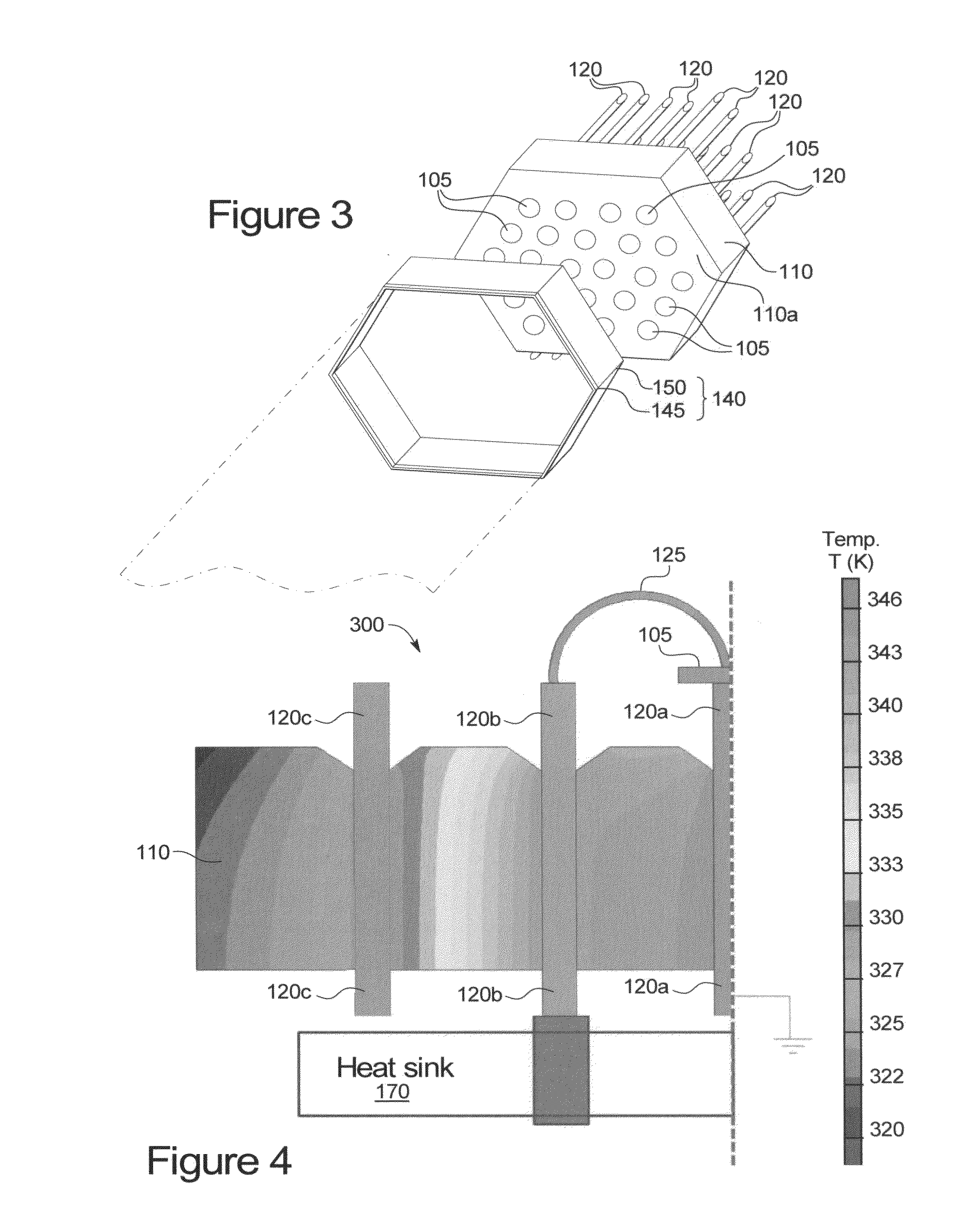Close-packed array of light emitting devices
a technology of light emitting devices and arrays, which is applied in the direction of semiconductor devices for light sources, lighting and heating apparatus, planar light sources, etc., can solve the problems of led chip failure, reduced light produced by leds and led chip efficiency, and inefficient process of light producing leds. achieve the effect of efficient light production and effective thermal managemen
- Summary
- Abstract
- Description
- Claims
- Application Information
AI Technical Summary
Benefits of technology
Problems solved by technology
Method used
Image
Examples
example 1
[0057]The thermal diffusivity of ten glass-tungsten rod composite specimens were measured using a flash diffusivity apparatus. An 8 ms pulse from a 2.4 kW Xe lamp (Acute 2-2400, Profoto) positioned about 300 mm from the specimen was employed for excitation. Heat propagation was monitored on the backside of the specimen using a 2 mm2 In—Sb detector. A 2-mm-thick sample of bulk SiC with a known thermal diffusivity of 0.0354 cm2 / s was used as a calibration standard.
[0058]Referring to Table 1, six of the composite specimens evaluated in the thermal diffusivity experiments include tungsten rods of about 100 microns in diameter, and four of the specimens include tungsten rods of about 75 microns in diameter. The number of conductive rods embedded within each glass matrix ranged from 352 to 982, and the overall diameter of the glass-tungsten rod composites ranged from about 0.4 mm to about 0.7 mm.
[0059]
TABLE 1Results of Thermal Diffusivity ExperimentsResults# ofSampleType%DwireDfiberwiresA...
example 2
[0061]Near-infrared (NIR) imaging is employed to confirm that tungsten rods embedded in a glass matrix are effective in removing heat anisotropically from an LED. To carry out the imaging experiments, a 2 mm-thick composite of tungsten rods embedded in a glass matrix is irradiated with NIR radiation. Referring to FIG. 12, the tungsten rods are about 100 microns in diameter and are separated by about 100 microns of glass. The conditions of the irradiation are similar to those for the diffusivity experiments, except that the detection is carried out with an InSb NIR camera. Direct imaging of the heat propagation shows that the tungsten rods play the role of heat pipes for longitudinal conduction of heat. The heat removed from an LED may be transferred to a heat sink and / or removed via convection from exposed portions of the rods, as described previously.
PUM
 Login to View More
Login to View More Abstract
Description
Claims
Application Information
 Login to View More
Login to View More - R&D
- Intellectual Property
- Life Sciences
- Materials
- Tech Scout
- Unparalleled Data Quality
- Higher Quality Content
- 60% Fewer Hallucinations
Browse by: Latest US Patents, China's latest patents, Technical Efficacy Thesaurus, Application Domain, Technology Topic, Popular Technical Reports.
© 2025 PatSnap. All rights reserved.Legal|Privacy policy|Modern Slavery Act Transparency Statement|Sitemap|About US| Contact US: help@patsnap.com



